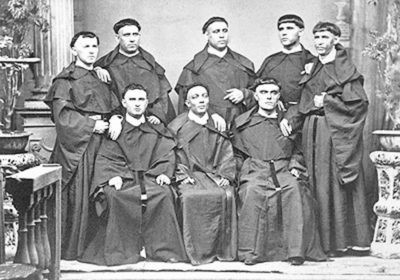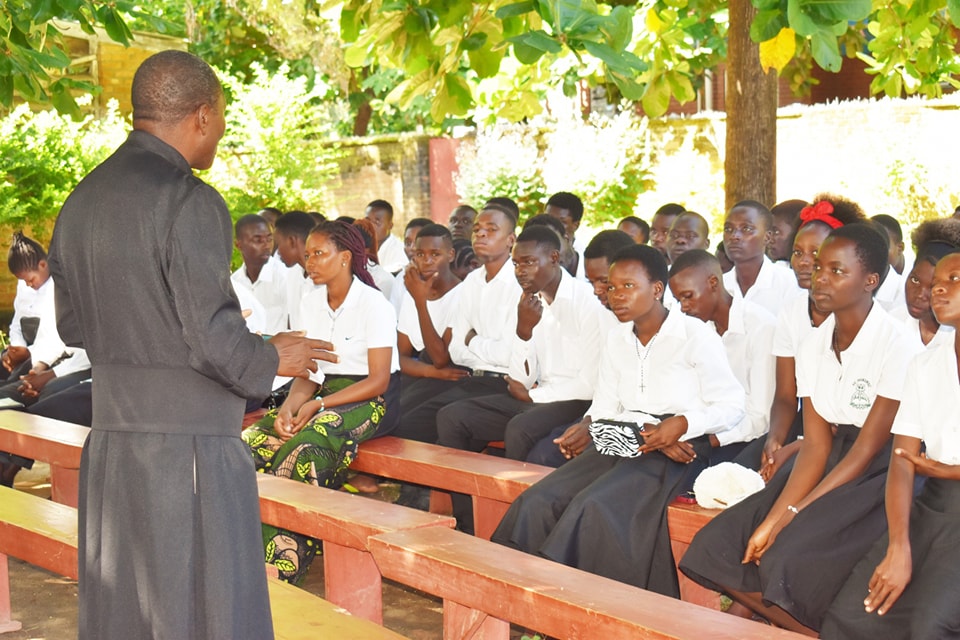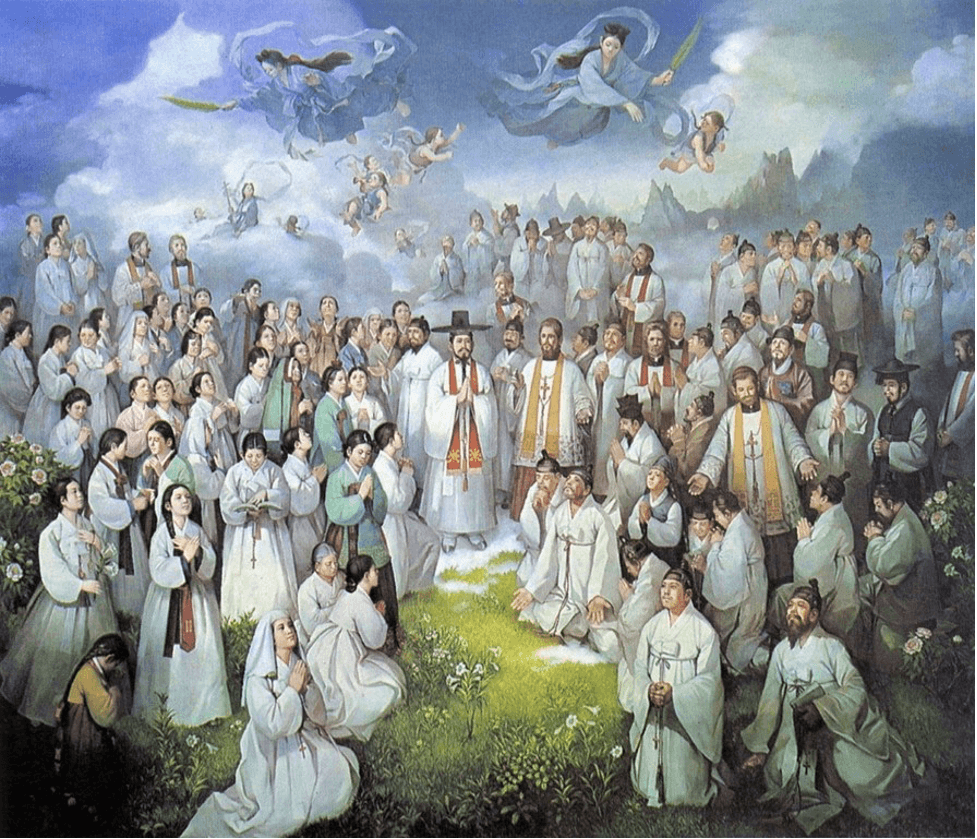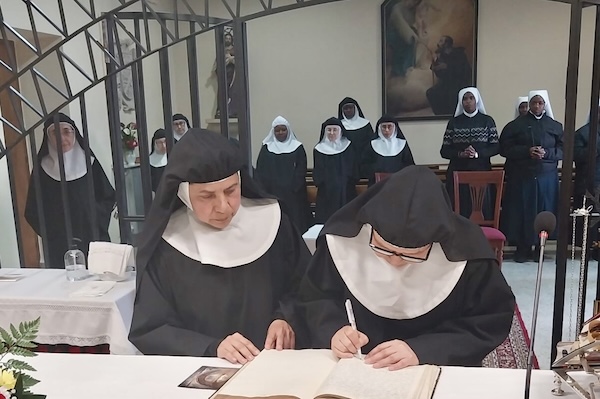Photo courtesy of Augustinian archives in Manila. Used with permission.
– Fr Leonard Dollentas
In his book Asia and Evangelization the former Archbishop of Guwalhati in India Thomas Menamparampil SDB, offered his enlightening thoughts on Asia and Evangelization: “For many people in Asia, conversion to God does not take place during a brilliant lecture, but during a deep prayer-experience with a believing community and close, intimate sharing. Their growing communities have a vision that is clearly Christ-centered. On this continent, faith has to be taken to truly deep levels in silence, concentration, contemplation, prayer, and solitude; collective search for meanings, values, reasons for social commitments … proving the path all the time towards our common destiny.” These words truly define how a missionary undertaking should be realized. Though they may have employed a different paradigm in missions, I cannot but admire the efficiency of the pioneering Spanish missionaries to the Philippines. They have been zealous with their commitment to the Church, to the faith, and to the poor. Thus, it is but profoundly meaningful that in the preparation phase of the 500th anniversary of the coming of Christianity in the Philippines, the year 2018 was dedicated to the Clergy and Consecrated Persons.
The Evangelization of the Philippines
The missionaries embarked on their missionary efforts in the Philippines upon Miguel López de Legazpi’s arrival in 1565, with the Augustinian Navigator Fr Andrés de Urdaneta. This was about 40 years after the first batch of Filipino Christians was introduced to the faith. Led by Father Urdaneta, the Spanish Augustinian friars, who moved from Mexico to the Philippines, became the first official Catholic missionaries in the country. In the quest of evangelization, after the Augustinians, the Franciscans missionaries arrived in 1577, followed by the Jesuits in 1581 and the Dominicans in 1587. The Augustinian Recollects arrived in Cebu in 1606. Most historians agree that from 1565 there was a rapid conversion of a huge number of Filipinos to the Catholic faith.
The Spanish Crown had given a mandate to use the power of the empire to bring diverse peoples into the Catholic religion and the use of coercion within mission was being sanctioned. As the missionaries were closer and familiar with the people, a number of them were uncomfortable with the harsh scheme to bring them to faith. They put their trust in nonviolent persuasion to convince the locals to embrace the faith. Dr. Jayeel Serrano Cornelio, director of the Development Studies Program at the Ateneo de Manila University described the pastoral approach of the early missionaries to the Philippines:
“The Christianization of the country was more than a change of heart of the people; the conversion included systematic lifestyle change. Friars made it a strict requirement for any native wanting to be baptized to have learned the tenets of Doctrina Cristiana, a document spelling out Catholic prayers, morality, and practices. Church leaders also taught catechisms—translated into vernacular languages—to young people. Friars ensured too that Christian teaching took over indigenous beliefs about restitution, sexual morality, and nature worship. Polygamy and slavery, for example, had to be renounced before baptism.” Indeed, the early missionaries worked dutifully for the Spanish crown, but with their commitment to the Church they made evangelization their life.
Exemplary Missionaries
The missionaries not only promoted the Catholic faith with fervor, but they also performed ministries of service, such as education, literacy, social justice, health care, and economic development. Although the main purpose of the evangelization was to teach religious doctrine, the first missionaries also taught industrial and agricultural skills. While they themselves had mastered the local languages, they also conducted reading and writing classes in the Spanish language. Discovering the love for music in the hearts of the natives, the Spanish missionaries also introduced the Filipinos to the science of music.
The missionaries were promoters of charity and humanitarian projects. Notable among them was the Franciscan Fr Felix Huerta, the administrator from 1850 to 1878 of San Lazaro Hospital which treated lepers for free. He was also responsible for two enduring and beneficial projects — Monte de Piedad, a bank for the poor, and Manila’s water supply system.
Along with Fr. Huerta, there were other Spanish clergy and religious who were known during their time because of their works for the human promotion and justice such as Fr Andres de Urdaneta who was considered as “protector of the Indians” for his treatment of the Filipino natives. The Franciscan Fray Juan de Plasencia, who lived an austere life of poverty, devoted his life to caring for the poor, the ill and the neglected. Another eminent Augustinian was Fray Martín de Rada. Fr. De Rada is remembered as a great defender of the Filipino people against injustice of Spanish officials at the local level.
Among the early Dominicans, Bishop Domingo de Salazar and Bishop Miguél de Benavides are fondly remembered. They fearlessly espoused the cause of the Filipino against Spanish oppression. Fr Pedro Bautista, the Franciscan missionary to the Philippines who became a saint, risked his life defending the rights of the poor Indios. (Indio is the Spanish Colonial racial term for the native people of the Philippines)
The Jesuits were more diplomatic with their evangelization approach. They were tolerant of the animistic beliefs of the Filipinos. They worked to establish a political alliance with those in the government. One may find this strange, but Jesuits had always been ingenious in their evangelization work. Fr Alonso Sánchez, one of the first four Jesuits who arrived in the Philippines explained the benefits of this alliance. He saw it as an exchange of favors: the Jesuits would assist in the Spanish monarchy’s imperial ambitions, and in return, the Crown would grant the Jesuits royal rights to the conversion of the subjugated people (Augustin Churruca Pelaez, Primeras fundaciones Jesuitas en Nueva España. Mexico City: Porua, 1980). Later, with their excellence in pedagogical work, the Jesuits transformed the Filipino elite boys to become “men for others.” One of them was Dr Jose Rizal who become the national hero of the Philippines.
Indeed, the rapid conversion of many Filipinos to the Catholic faith during the early years of the missionary work could reasonably be attributed to the good personal example of a number of early missionaries, notwithstanding historical records that showed friars and religious who were involved in various scandals and abuses. They and the other Spaniards who mistreated the Filipino natives disgraced the Spanish Crown and the Church. But we can neither alter the history records of the pioneering religious missionaries of the Catholic Church who conquered the Filipino hearts with their records of uprightness, creativity, compassion, and love for the ignorant Indios.
2018 The Year of the Clergy and The Religious
As the country prepares the faithful for the 500 years of the advent of Christianity in the islands on March 16, 2021, Filipinos look back with gratitude to the efforts of the early missionaries and the present clergy and consecrated persons in the country who sustain the efforts of evangelizations. The Catholic Bishops’ Conference of the Philippines (CBCP) Pastoral Exhortation on the Year of the Clergy and Consecrated Persons emphasized this with the year 2018 being dedicated to the Clergy and Consecrated Persons. They comprise just a small portion of the Church, yet they are fulfilling a vital role in her mission. In our culture, they are greatly instrumental for the lay people to become truly an evangelized and evangelizing community of disciples.


 Follow
Follow


